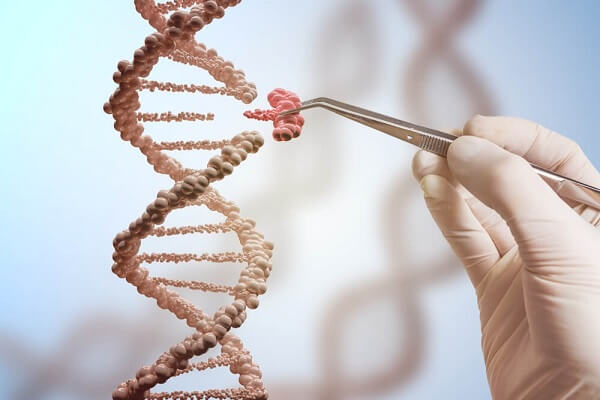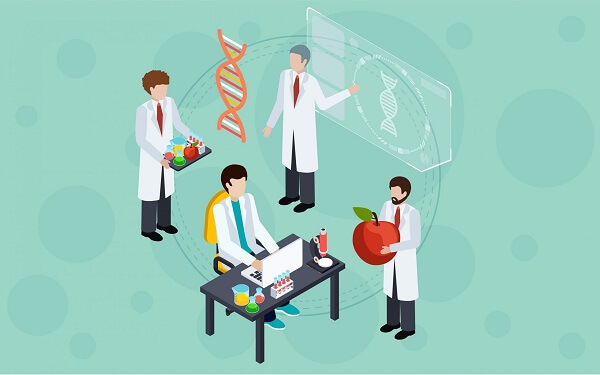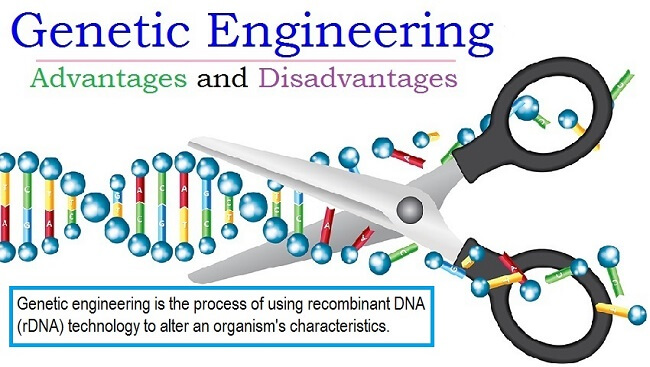Advantages and Disadvantages of Genetic EngineeringGenetic engineering, gene alteration, and characteristics selection all have been debatable & questioned from their inception, whether it is from a social, scientific, or ethical perspective. Concerning this controversial subject, the most common inquiries and interrogations center on safety, individual rights, social inequity, and aristocracy. 
In this article, we will discuss genetic engineering, what it implies for people, and how it can impact our daily lives. What benefits and drawbacks can genetic engineering offer? What role does genetic engineering have in human life? That's in addition to talking about rules and laws related to ethics and safety, which are highly important to everyone, from doctors and scientists to patients & parents. Let's begin! What do you mean by Genetic Engineering?The method of genetic engineering involves using technology to change an organism's DNA. Genetic alteration and genetic engineering are both used similarly. To achieve a desired trait, the procedure may include modifying the genome, or the whole of an organism's DNA. Getting rid of a bad characteristic may also require eliminating portions of the genome. Any creature, be it a plants, an animal, a bacterium, or a person, may be subjected to genetic engineering with the aim of increasing or changing its appearance. Types of Genetic ModificationThere are several ways in which genetic changes might take place. To modify an organism's genetic structure and alter its traits, gene editing is done. With the use of recombinant DNA technology, DNA from two distinct species is combined in a host organism, usually a strain of bacteria. Gene silencing, which involves suppressing or regulating a gene's expression, is another kind of genetic alteration. Gene silencing has been used to produce plants like the Arctic apple. After being chopped, it won't become brown since the browning gene has been inhibited. The following methods may be used to any of these genetic engineering procedures: 
Effect of Genetic Engineering on different AspectsScience and technology are widely used in human genetic engineering. It was created in an effort to stop the spread of illnesses. Because of the development of genetic engineering, it is now possible for researchers to alter the way the genomes cause certain illnesses that come from a genetic mutation. Nowadays, genetic engineering is employed to treat illnesses like diabetes and countless others, as well as conditions like cystic fibrosis. The "bubble boy" sickness is a fatal condition that is now being cured via genetic engineering (Severe Combined Immunodeficiency). This is a resounding example of how genetic engineering may enhance life quality and extend lifespan. The potential to treat illnesses and disorders in unborn infants is undoubtedly one of this field's biggest advantages. An unborn child may be treated if they undergo genetic testing. This may eventually affect how quickly illnesses spread in the next generations. These advantages do not, however, come without risk. People have strong feelings either for or against the development of human genetic engineering. The impact of this concept on the biosphere is briefly discussed in this article, along with several contentious concerns that surround the use of this technology. The information used to produce the paper came from peer-reviewed publications that were included in PubMed from 2000 to 2015. 1. Environmental ImpactsAlthough this area can potentially have enormously good effects, there are still many unanswered concerns. Genetically engineered new creatures could cause ecological issues. The effects that a genetically modified animal might have on the ecosystem are unpredictable. Just like alien species would do, the introduction of a novel genetically modified species might lead to an ecological imbalance in the area. A mishap or an uncertain outcome might lead to several issues. Incorrect genetic engineering of a virus or bacterium, for instance, might produce a stronger kind that, if unleashed, could start a catastrophic epidemic. In the case of human genetic engineering, this might be deadly, resulting in anything from mild health issues to fatalities. 2. Effects on PeopleGiven that genetic engineering uses viral vectors to deliver functional genes into the human body, the effects are still not fully understood. There are no hints as to the placement of functional genes. In certain cases, they could even substitute healthy genes for defective ones. As a result, this might cause further human health problems or diseases. Additionally, it is anticipated that genetic variety will decrease as dysfunctional genes are replaced with functioning ones. If all humans have similar genomes, the population will be more vulnerable to viruses and other illnesses. Additionally, genetic engineering may have unintended consequences or results. Some persons may have unexpected allergic responses as a result of alterations made to a plant or animal that did not happen in the original form. Other alterations could make an organism poisonous to people or other living things. 3. Medicine ResistanceAntibiotic resistance genes are often used in genetic engineering as "selectable markers." These indicators aid in the early detection of cells that have ingested foreign genes. The genes are still expressed in plant tissues, despite being useless. Most GM plant crops include fully functional genes for antibiotic resistance. Genes that confer antibiotic resistance may have fatal consequences in food. As a result, while taking antibiotics with meals, consuming certain items may decrease their ability to fight illness. Furthermore, the resistance genes could be passed on to infections that affect people or animals, rendering them resistant to drugs. If transfer were to occur, it might exacerbate the already major health issue of disease germs resistant to antibiotics. 4. Social and Ethical Problems
To help tomatoes and peppers develop more quickly, genetic mutations are now being put into the plants. This implies that it is now possible to practise vegetarianism and cannibalism simultaneously. This very same argument regarding eating pork with human Genes may be put to meat eaters. How about the mice created via genetic engineering to generate human sperm. How will it affect the children psychologically is the question.
Genetic Engineering: Advantages and DisadvantagesParticularly in relation to genetic alterations in people, genetic engineering has grown to be a contentious subject. The use of genetic engineering has both benefits and drawbacks. The parts that follow will examine each side in more detail. 
Advantages of Genetic EngineeringNumerous applications of genetic engineering have benefited society, and there is yet room for more. The following are some advantages of genetic engineering that have already been applied or may be employed:
Disadvantages of Genetic EngineeringThe use of genetic engineering has drawbacks as well. Its applications have given birth to moral and ethical concerns, and they have the ability to make matters worse. Genetic engineering may have several drawbacks, such as the following:
This raises moral concerns about whether or not parents should have that authority, the danger of an imbalanced male-to-female ratio, and the appropriateness of even tampering with a person's DNA.
It is up to the owner's judgement whether to make it more inexpensive or accessible in regions of the globe where it is most needed; he or she may decide to increase pricing or restrict its accessibility. Only the wealthy could be able to afford gene therapy to cure illnesses if costs for human genes rise to that level. ConclusionsModern society has integrated genetic engineering into practically every aspect of life, and its extensive applications have affected and advanced almost every significant subject. The healthcare, agriculture, and pharmaceutical industries have all been transformed by this technology. Depending on our needs, various approaches are used in genetic engineering for various goals. With the help of this technology, we now have crops that are resistant to pests, transgenic organisms and hormones, and several other critical goods. Without this technology, biological research today cannot be considered complete. |
 For Videos Join Our Youtube Channel: Join Now
For Videos Join Our Youtube Channel: Join Now
Feedback
- Send your Feedback to [email protected]
Help Others, Please Share










